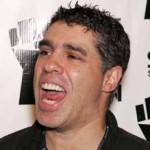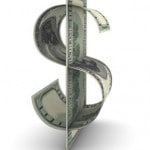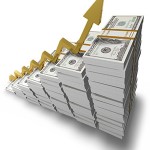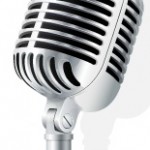Potential vs. Realized Potential
In late 2006, and early 2007, people began to question the value of the potential they saw in SDARS. Some questioned it altogether, while others reduced their expectations. SDARS had been gathering subscribers for years, and costs were mounting. It seemed while the companies still had potential, peoples expectations began to diminish. Then came the merger.
The merger was to be an answer. Combine the companies, cut costs, and bring forward synergies, and all of that potential had a real shot at becoming real again. Then came the merger delays.
Month after month passed with relative silence from regulators as well as the companies. Analysts were left to their own devices and assumptions as everyone waited on merger news that just never seemed to materialize. The stocks got caught in a trading channel, and became a favorite hunting ground for traders and shorts. With no real news, and delay after delay, even the most faithful fans of the sector saw their confidence wain. Subscribers still came, and potential still existed, but the wait was straining everyone. With a bad economy, and poor auto sales, it became difficult to bet on potential when the outcome of the merger was still up in the air. Then the merger was announced.
The day had finally come. The merger of Sirius and XM was complete. It was time for a merged satellite radio company to be born, and for all of those that believed in the potential to see their reward. The problem was that betting on potential had become tiresome in the satellite radio sector for many. Now the comfort level of the street has shifted. People still see the potential, but now investors want more. They want to see some realized potential.
Realized potential is when a company reaches the points that early investors thought were possible. It is getting to the metrics and position that people thought it would. Right now Sirius XM Radio is in the transition between potential and realized potential. It is in that uncomfortable spot where people want to invest, but also want a little bit more than the company can deliver at this point in time.
When Sirius XM’s CEO Mel Karmazin scooped up 2,000,000 shares on August fourth, it was a vote of confidence by him in the company. It was the little spark that can get the ball rolling. It is an indication to the street that realized potential is around the corner.
Investors who have followed the career of, or become educated on the career of Mel Karmazin should understand one thing. When Mel sets a goal, and reiterates that goal more than once, he does whatever it takes to get there. Those that have seen this in the past know that Mel’s goal of $400,000,000 in synergies will be realized. His goal of 2009 Free Cash Flow Positive less the satellite launch will be realized. All activities within the company will be measured against these goals. Another characteristic of Karmazin is that he tends to under promise and over deliver.
Some investors will see Mel Karmazin’s actions as potential that will materialize, and will be the early investors into the merged company. Others will be more conservative, and wait to see a quarterly report or two before jumping in.
The Sirius XM Radio Conference call is two days away. Mel will be outlining performance as well as goals, and setting out guidance. At this point investors need to determine for themselves where the potential is, and when the realized potential will materialize.
Position – Long SIRI





Tyler where else r u invested? I sold siri and bought xmsr 2 days befor merger. Thx. I’m still buying siri.
kevin,
I really do not speak of my other investing activity on this site. Feel free to drop me an e-mail though
400 million is chicken shit in a budget of 3.3 Billion (sales + Loss) 400 million also leaves SIXM losing 600 million in 2009 and maybe breaking even in 2010 just before going red again in 2011 as Howard leaves.
Tyler its all BS to me
I have lost ALL faith in sirius and Mel after six years and 66,000 share. I will take my money off the table. I don’t care if sirius goes to 100.00 next week it’s OVER
GOOD BYE
THE END
I value your commentary Tyler. You are thoughtful, and balanced rarely playing cheerleader, and rarely being doomsayer, your are as close to un-biased as it gets in journalism.
Anyway, I own many shares almost 20,000 and have a $50,000 loss so I am feeling a bit frustrated, but am happy Mel Karmazin bought more. I will wait until I hear this earnings report, and the goals set by Mel to see if I feel like putting more money to work at this point.
I hope you might send your articles and send your great insights directly to Mel Karmazin at mkarmazin@siriusradio.com. That is my request to you so that I do not have to constantly do it.
You could work for Sirius/XM with your terrific insights and really help guide the brilliance of Mel Karmazin to be even that much better at reaching his stated goals.
Tyler,Brandon,
Can either of you explain this “XM Announces Offer to Purchase Senior Floating Rate Notes due 2013” This was released sometime today but never put through the pipelines.
More stuff that never makes it to the wires. There is definitely a conspiracy to bury Sirius information.
.
Click on Sirius Travel Link.
Tyler,
I agree with Bob. Your comments are very insightful. The only downside I see at this point is a serious recession, almost a depression. The competition is there, but not a big impact. I want more than music in a car. Where else do you get the variety that SIRIUS offers? Many of my friends have experienced SIRIUS in a car purchase and all have liked it, even raved about it. I think the SUB numbers will take a huge jump soon. The NAB has many friends that are still writing about only the potential negative side of it. My first place for info is you and Brandon. Thanks.
Leroy, do you look at the metrics at all. Have you seen how the last few quarters of revenue gains from new subscriber has gone to the bottum line. Here is an example SIRI for 2007 had about 550 million in loss. Almost all cost ether stay the same or went down, or went up a small amount compared to the revenue gained. So lets say they get 1.4 to 1.5 million in 2008 and another 1.5 in 2009 and cost minus CAPEX go up the same % as to revenue as in 2007. That gives them 300 million (free of cost) extra in 2009 compared to 2007, to come off the 550 million loss in 2007. That leaves 250 million left. Now thats on a stand along basis. It is also a quick estimate off the top of my head.